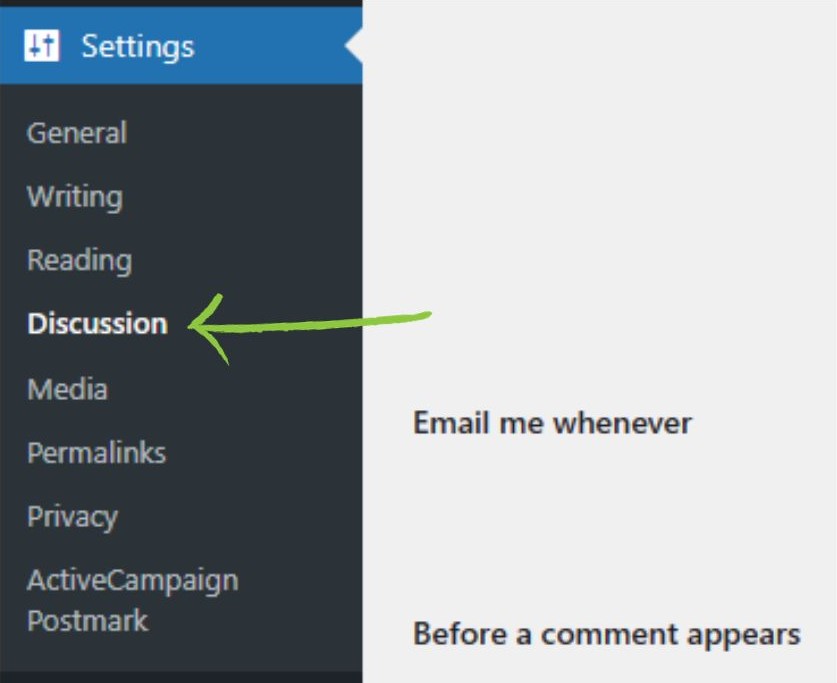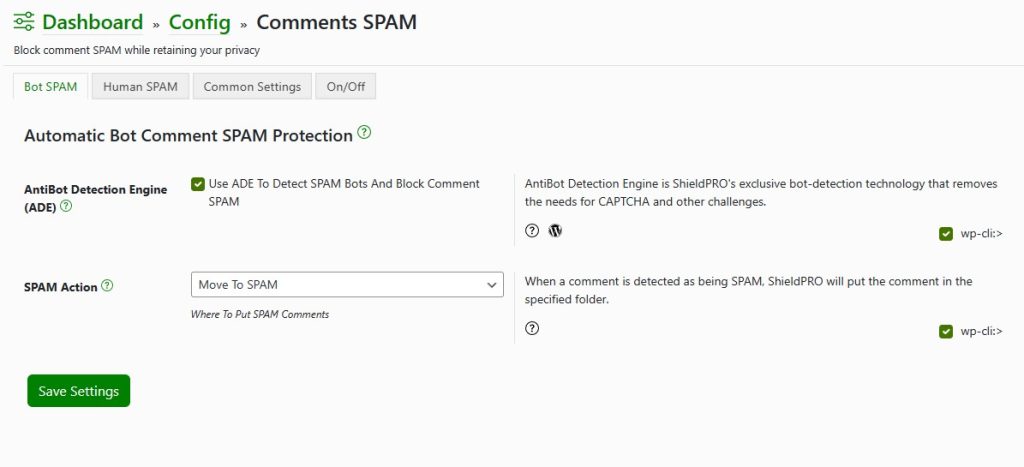Are you worried about spam comments on your WordPress website?
Unchecked, spam can make your site look poorly managed and create genuine hazards for users. Most of all, they take away the true purpose of comment sections – creating a safe space for your community to ask questions, share ideas, and provide constructive feedback
Whether you’re already a victim of spam comments or you want to prevent it from happening, this article is for you. Together, we’ll explore the motivations behind comment spam, look at the potential risks of letting spam bots run wild on your site, and share valuable prevention strategies.
By the end of this guide, you’ll have the power to safeguard your site against the detrimental impacts of spam, ensuring a secure and pleasant user experience.
Understanding WordPress comment spam
WordPress comment spam happens when irrelevant comments are left by spam bots or individuals in a website’s comment section.
Individuals manually find popular comment sections to create spam comments. Although harder to detect, human-based spam is less common due to its labor-intensive nature. These comments often contain links to external sites in order to boost SEO artificially or participate in phishing scams.
Alternatively, companies may use spam bots to automatically find comment sections and post comments containing spam. While this kind of spam is easier to spot and prevent, bot-based spam is more prevalent thanks to its efficiency through automation.
Each of these presents significant challenges and potential risks for website owners:
- Flooding with irrelevant or harmful content: Comment spam fills your comment sections with content, most of which is unrelated to the original post. This flood of irrelevant or harmful material can clutter the discussion space, making it difficult for users to find valuable information.
- Bad user experience and negative impressions: Comment spam creates a poor user experience by detracting from the genuine interactions and discussions users are looking for. A cluttered comment section filled with spam leaves a negative impression, suggesting inadequate comment moderation or even abandonment of the site. This can discourage user engagement and participation in discussions.
- Risk to user safety: Comment spam often includes links that can direct users to malicious sites. This poses a significant risk to users, as these sites may be involved in phishing scams, leading unsuspecting visitors to fake login pages compromising their credentials.
The implications of unmanaged spam comments could potentially be huge:
- Decreased site security and credibility: Unchecked comment spam diminishes the perceived security and credibility of a website. A site filled with spam suggests lax moderation, potentially making users question the overall reliability of the platform.
- Negative impact on SEO ranking: Search engines may penalize websites with a high volume of spam, affecting their SEO ranking. Unmanaged spam can be interpreted as a lack of content quality and user trust, influencing search engines to downrank the site.

Why does comment spam exist?
Comment spam exists for a number of reasons. It can be a tool for boosting a website’s SEO, identifiable when spammers include links to their websites directly within the comments. These links, when indexed by search engines, can contribute to the backlink profile of the spammer’s site. Most search engines have checks to detect and punish this approach, but that hasn’t stopped spammers from trying it anyway.
Some comment spam is geared towards promoting products or services. These often irrelevant promotions seek to attract users’ attention and direct them to external commercial sites. In more malicious instances, comment spam may be part of credentials phishing schemes. If the included link leads to a fake login page for a trusted site, such as Facebook, unsuspecting users may unknowingly provide sensitive information.
Depending on the method used to create the spam, the techniques used to address it varies. Human-based spam may necessitate more nuanced moderation, while you can mitigate bot-based spam using automated solutions. Plugins like Shield Security PRO can be effective in managing and preventing both types of comment spam. Some plugins often offer protection against 1 or other, and sometimes as in the case of Shield Security, both human- and bot-generated spam.
How can you combat comment spam?
Let’s explore the steps WordPress users can take to reduce comment spam. You can access these comment settings by following the Settings > Discussion section of your WordPress dashboard.

In this section, there are certain settings that can help reduce WordPress comment spam
Disable comments that are anonymous
- Check the box labeled Comment author must fill out name and email and/or Users must be registered and log in to make comments.
- The former is often preferable as the latter can limit potential commenters, potentially hindering legitimate engagement.

| Pros | Cons |
| Increases the effort required by spammers, making spam less likely. | Imperfect solution as human spammers can easily fill out the information. |
| May deter bots that are not prepared to fill out the required information. | May inconvenience legitimate users by making commenting more complex. |
Moderate comments manually
- Set up your site so that you must manually review and approve comments before they appear on the site.
- Enable moderation using the Email me whenever and Before a comment appears sections.
- In the Email… section, select When a comment is held for moderation.
- In the Before… section, select Comment must be manually approved.

| Pros | Cons |
| Provides full control over what appears in the comment sections. | Time-consuming, especially on a large scale or popular post. |
Set up automatic content moderation
- Use the Content Moderation section of the discussion settings.
- Set an upper limit for the number of links in a comment.
- Blacklist terms to automatically block comments containing certain flagged words.

| Pros | Cons |
| Automated measures reduce your workload. | Poor accuracy; spam comments may not always contain several links or flagged words. |
| Legitimate comments could potentially be flagged. |
Close your comment section
- To turn off comments entirely, uncheck Users may comment on new posts under the Default post settings section.
- This decision requires careful consideration, but it’s worth noting that not all websites necessarily need comment sections.

| Pros | Cons |
| Eliminates the risk of comment spam entirely. | Removes the potential for dialogue, connection, and community building, making it unsuitable for many websites. |
While these measures are valuable in reducing comment spam, the WordPress default settings hardly offer the perfect solution. Users can enhance their site’s security using plugins like Shield Security PRO, which provides advanced features for more effective spam detection and prevention.
Shield Security PRO offers a comprehensive and nuanced approach to combating comment spam, combining automated tools with human intervention to create a robust defense against unwanted and potentially harmful content. By combining built-in settings and specialized WordPress plugins, users can create a more secure and user-friendly environment for their websites.
How Shield Security PRO manages spam

A powerful security plugin like Shield Security PRO can significantly enhance your ability to moderate and combat spam. This plugin incorporates features designed to reduce comment spam, conveniently located within the comment spam module.
To find this module, head to your WordPress dashboard and select ShieldPRO on the left-hand navigation bar. From here, go to Config > SPAM.

Within the SPAM section, you’ll find several tabs and settings to customize your spam detection and prevention strategies:
- Bot and human spam tabs:
- These tabs allow people to toggle between bot and human spam detection methods.
- Define where detected spam goes – whether for moderation or immediate deletion.
- Common settings:
- Define the minimum number of approved posts before users are no longer scanned as bots.
- Set user roles that should and should not be scanned.
- On/Off:
- Fully turn the spam detection module on or off.
It’s important to note that Shield Security PRO handles bot and human spam differently.
Detecting and preventing bot spam
Shield Security PRO employs its AntiBot Detection Engine (ADE) to identify and block bot spam. The ADE is designed to recognize bots based on their behavior patterns as they navigate your website. Bots often exhibit distinct behavior compared to human users, such as rapid and repeated login attempts with different credentials.
The ADE is trained to identify these ‘bot signals’, and upon detection, Shield Security PRO automatically blocks the offending IP address. This swift identification and blocking mechanism make the ADE highly effective, preventing 100% of bot-fueled comment spam.
Detecting and reducing human spam
Human spam, while less common than bot spam, poses a unique challenge as it is far more subtle. Shield Security PRO addresses this by blacklisting common spam terms, referencing the master list of frequently used terms in spam. Unlike the basic WordPress system, Shield Security PRO has a more efficient and resource-friendly approach to scanning for these terms.
💡Did you know? Shield Security PRO discourages using the basic WordPress system for blacklisting these terms because its scanning process is resource-intensive and inefficient. Instead, it recommends reserving the WordPress system for creating a personal blacklist of terms that you may want to ban for reasons beyond spam, such as profanity.
Shield Security PRO offers a sophisticated approach to combating comment spam. Using these features significantly enhances your site’s security and ensures a more secure user experience.
Impact of spam comments on SEO and site performance
Maintaining a strong SEO profile is crucial for the success of any website, as it directly influences its visibility and ranking on search engines. Spam comments can significantly impede SEO goals, negatively affecting the website’s performance and credibility in various ways:
Reduced search engine ranking:
- Spam is considered a black-hat marketing technique, and search engines penalize sites that allow unchecked spam to flourish.
- If search engines detect a high volume of spam on your site, they may reduce its ranking, making it less likely to appear in top search results.
Clutter and decreased credibility:
- Spam comments clutter the site, reducing visual appeal and creating a less user-friendly environment.
- The presence of spam can decrease the site’s overall credibility, potentially discouraging users from exploring further. Reduced credibility may lead to lower overall traffic and shorter user visits, which also contribute to a lower SEO rank.
Impact on site performance:
- Spam, especially when generated by bots, can adversely affect site performance by consuming valuable resources.
- Unchecked spam bots, in particular, can take up server resources, making the site lag for legitimate users.
- Anything that takes up resources on a website can cause it to slow down and perform poorly, directly impacting the user experience.
By adopting a proactive cybersecurity approach and implementing effective spam prevention measures, Shield Security PRO users can avoid these issues and maintain a secure online presence.

Create a spam-free website with Shield Security PRO
Your comment section should be a welcoming place for people to give their opinions, share their thoughts, and engage with others on your site. Spam comments threaten this space by causing credibility issues, SEO damage, laggy performance, and a subpar user experience.
Shield Security PRO addresses these challenges head-on, offering a solution to dramatically reduce human spam and completely block bot-driven spam. By incorporating Shield Security PRO into your website, you safeguard your platform from various vulnerabilities, reduce the adverse effects of spam, and create a secure and inviting environment for your audience.
Take the proactive step today to reduce spam in your comments, and embark on a journey toward a more secure and engaging website with Shield Security PRO!


Very interesting article. I tried various techniques to stop spam, but eventually had to block comments altogether because I was getting at least 10-15 comments a day in incomprehensible languages, even without direct links, but still absolutely useless and harmful. I feel sorry for the few people who were legitimately commenting, but I really had no other option.